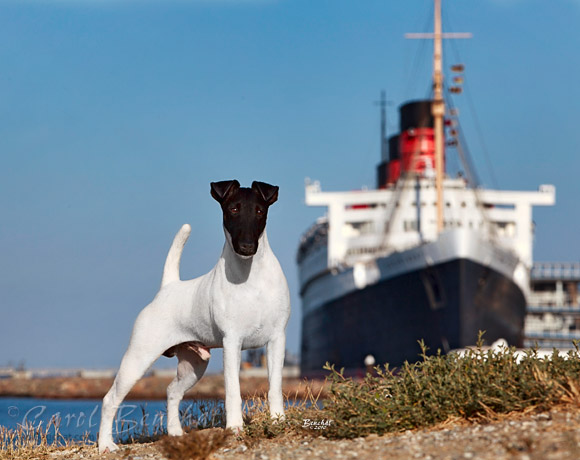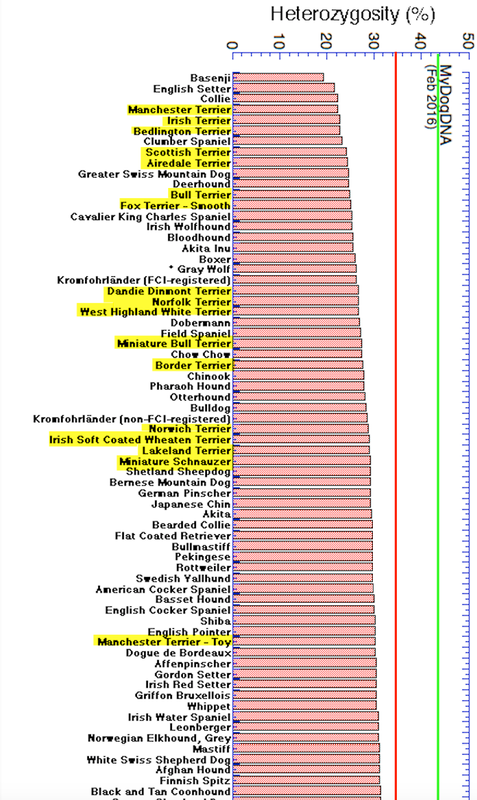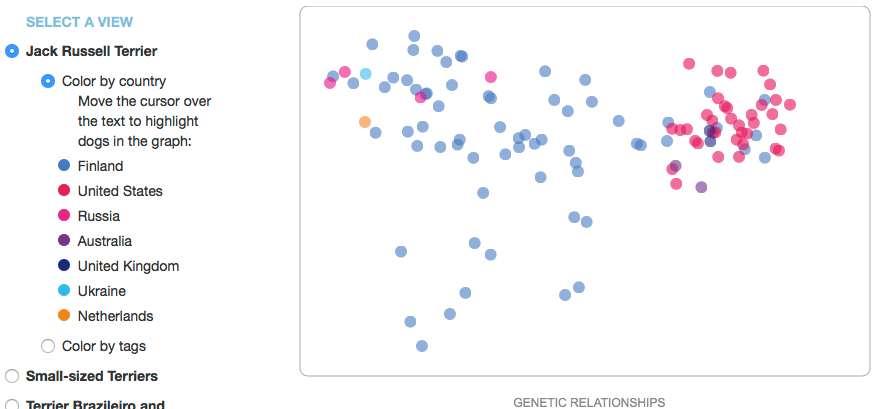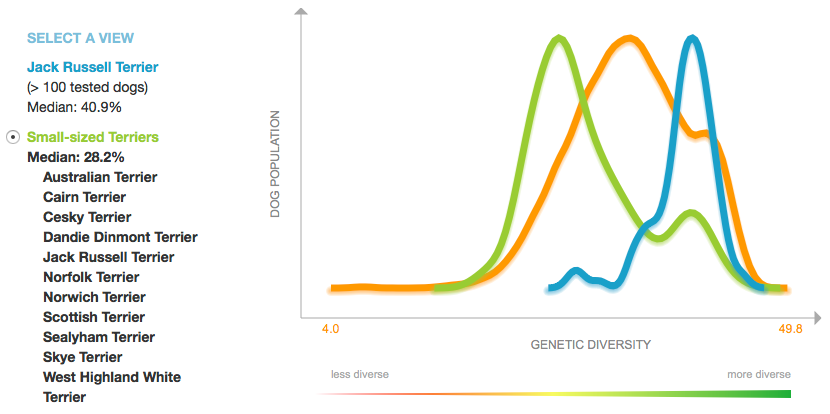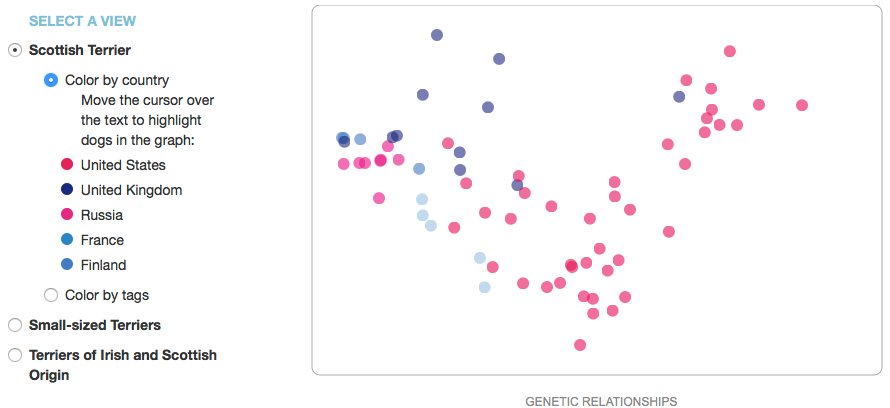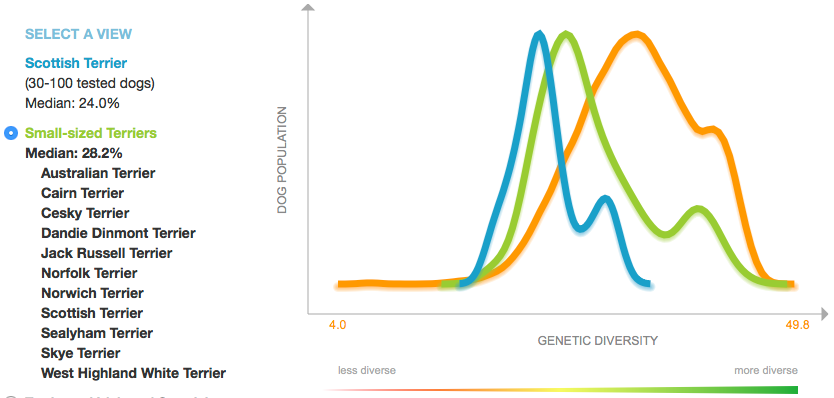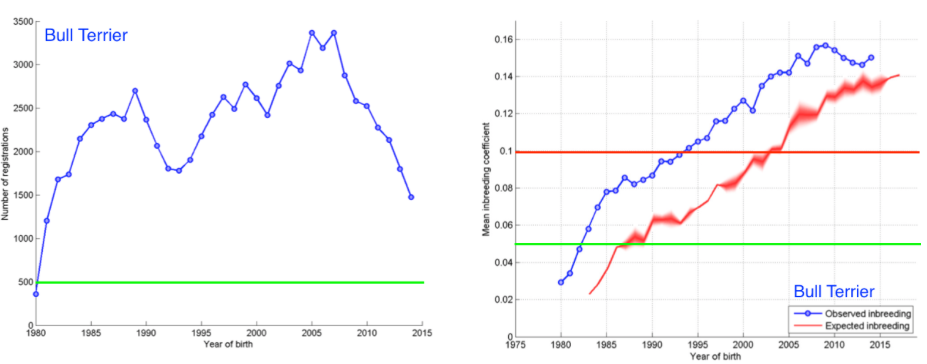| This morning at the top of my Facebook news feed was a post by a long-time terrier lover and "dog writer", Billy Wheeler, about the potential demise of the Sealyham Terrier, which suffers from declining popularity and diminishing numbers. Over the last few weeks, I've been gathering up information from various sources about the genetic diversity and population numbers of dog breeds. While I'm still dredging for data, the information for terriers had already caught my attention. Although I didn't yet have things properly organized and documented for public review, Billy's post has prompted me to share with you some of this information. As I said, I wasn't planning on putting this out there now, but sooner is definitely better than later, and with apologies to the reader for rough edges, I share with you my response to Billy. |
The Sealyham Terrier is almost extinct. AKC why do you not publish registration numbers? Dog lovers, show this photo of Cruft's winner, CH Efbe's Hidalgo at Good Spice (beautifully captured by Lisa Croft-Elliott) to your friends, relatives, and neighbors. Tell them a breed once owned by the British Royal family and movie stars is almost gone. It is estimated that there are less than 500 in the world today. That's way less than Gray Whales, Lowland Gorillas, or Polar Bears.
My response:
Billy D Wheeler - I sat down at my computer this morning and saw this post, and I could kiss you. I've been working for a while on evaluating the genetic status of purebred dog breeds, and there are many breeds in peril, but as a group there is none worse off than the terriers. The information I'm pulling together isn't ready for prime time yet - I haven't written nice descriptions and the other text that should go with this stuff, but I'm going to offer it up for you to look at and I think you can figure it out well enough.
There are two things that are critical indicators of the genetic status of purebred dogs - the level of genetic diversity in a breed, and the population size. The latter is important because low population size results in a faster rate of inbreeding - there just aren't enough dogs to breed to, and inbreeding results in the expression of deleterious mutations that compromise health.
Here are some data in a number of forms that you can evaluate.
First, I have gathered up the breed-specific data for genetic diversity and population structure from DNA analysis on the MyDogDNA website (www.mydogdna.com) and organized them here -
http://www.instituteofcaninebiology.org/mdd---terrier-breeds.html
At the top of the page (and included below) I have posted the heterozygosity data for all breeds (the breed names will be way too small to see, but you can download a larger file at the bottom). The horizontal line is the median heterozygosity for all dogs in their data, and the green horizontal line is the median for mixed breed dogs. High heterozygosity (low inbreeding) is to the right, low to the left. Below this graph I have enlarged just the left end (and turned it vertically) so you can read the breed names and I've highlighted the terriers among this group.
| Jack Russell Terrier |
Some of the breeds with low heterozygosity might not seem from general impressions to be in such dire straits, but you need to consider these data together with the other information available. For instance, Bull Terriers have very low genetic diversity, and this has been confirmed in other studies as well, including the data just published last year by the UK Kennel Club, which I have compiled here.
http://www.instituteofcaninebiology.org/terriers-select-breeds.html
If you look at the graphs below for Bull Terriers, you will see that it not only confirms the high inbreeding coefficient (that's the blue line zooming past the horizontal red line on the graph to the right), but it also shows that the trajectory of the breed appears to be going ever skyward - AND the registration numbers in the graph on the left are dropping like a rock. As the population size declines, this will necessarily increase the rate of inbreeding.
In the right hand graph, the red squiggly line is the inbreeding level that would be possible if the dogs were breeding randomly and the blue line above this indicates that dogs being bred are more closely related than average. The green horizontal line is inbreeding of 5%, the red horizontal line is 10% - this is inbreeding that has accumulated just since 1980. I hope this is enough explanation to give you a sense of what this means.
Billy, breeders are understandably trying to improve health by identifying specific mutations and breeding away from them one at a time. But heterozygosity is the only true "health test" - because it is for ALL genes and mutations - and most of these breeds are headed in the direction of extinction.
I have talked here about the risks that come with small population sizes:
http://www.instituteofcaninebiology.org/.../the-trouble...
To the biologists, the future of many terriers breeds is in clear jeopardy (and again, the worst off aren't even on these graphs because of low numbers and not enough data - Sealyham, Cesky, etc). As I put the data together for terriers and the other breed groups, I struggle with finding a way to communicate this information to breeders in a way that will encourage them to look past the ribbons and litter of adorable puppies and recognize that we need to take action if these breeds are still going to be around 25 or 50 years from now. Many are on the UK KC's list of vulnerable breeds, but there is no plan to do something about this.
I had no trouble at all convincing canine geneticists that we should study the DNA of these breeds now before we lose them, and we will be working on getting that project going in the next 6 months or so. This information could also form the basis of a genetic restoration plan if such a thing could be organized. But those that love these breeds need to recognize that there is a serious problem, and hunker down and make a plan to not just improve numbers but also adopt breeding strategies that will preserve and improve the existing gene pools.
I would have no trouble at all getting canine geneticists and population biologists interested in working on a plan to address these problems, but the interest and support must come from the breeders.Unfortunately, I despair that breeders won't take this seriously.
I would love to hear your thoughts.
| _-_mdd_genetic_diversity_by_rank_copy_2.png |
ICB's online courses
*******************
Coming up NEXT -
Basic Population Genetics for Dog Breeders
Class starts 4 April 2016
Sign up now!
***************************************
Visit our Facebook Groups
ICB Institute of Canine Biology
...the latest canine news and research
ICB Breeding for the Future
...the science of dog breeding
